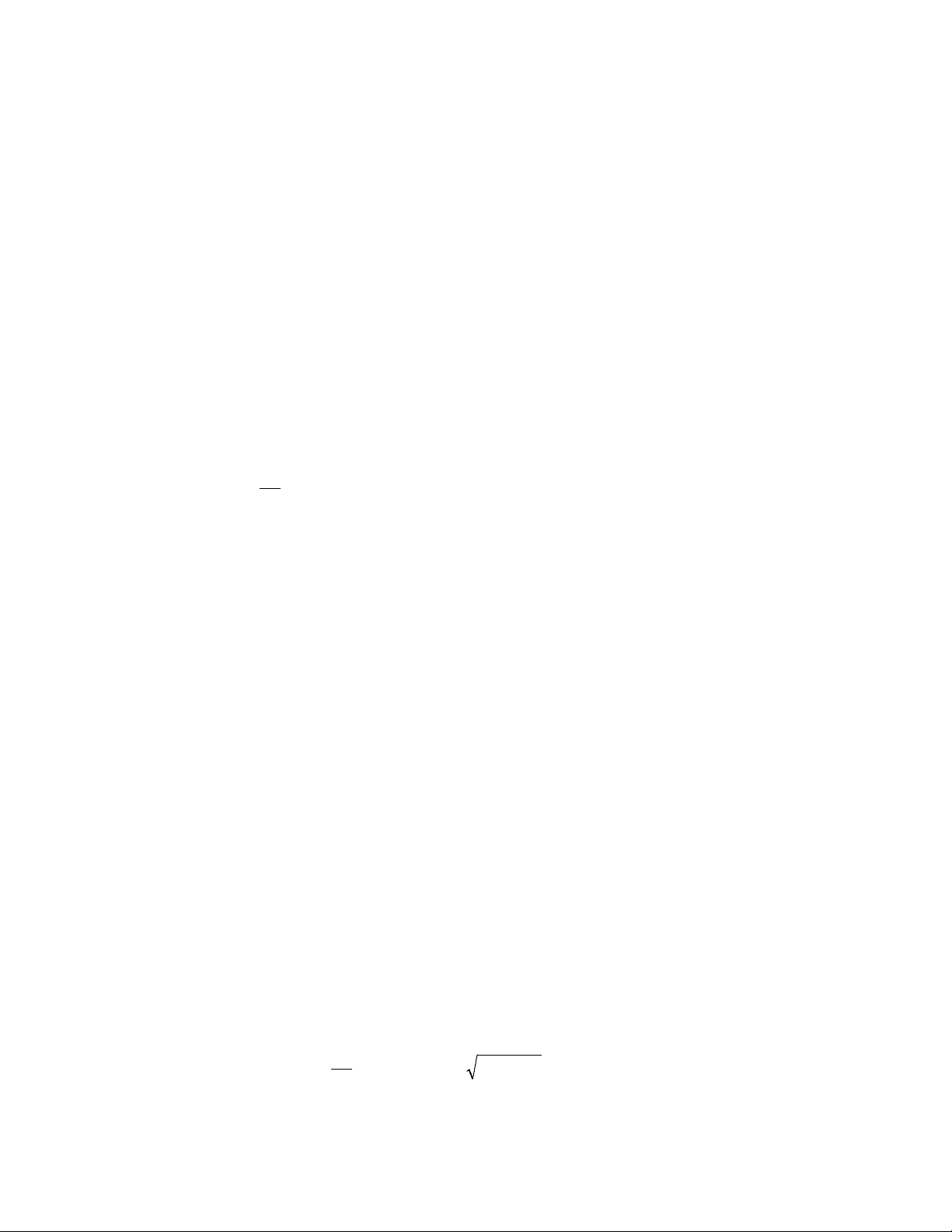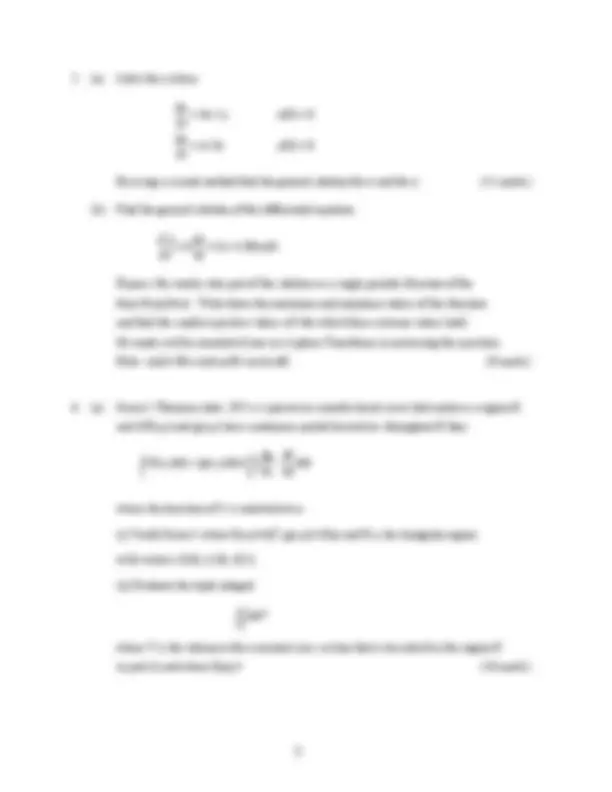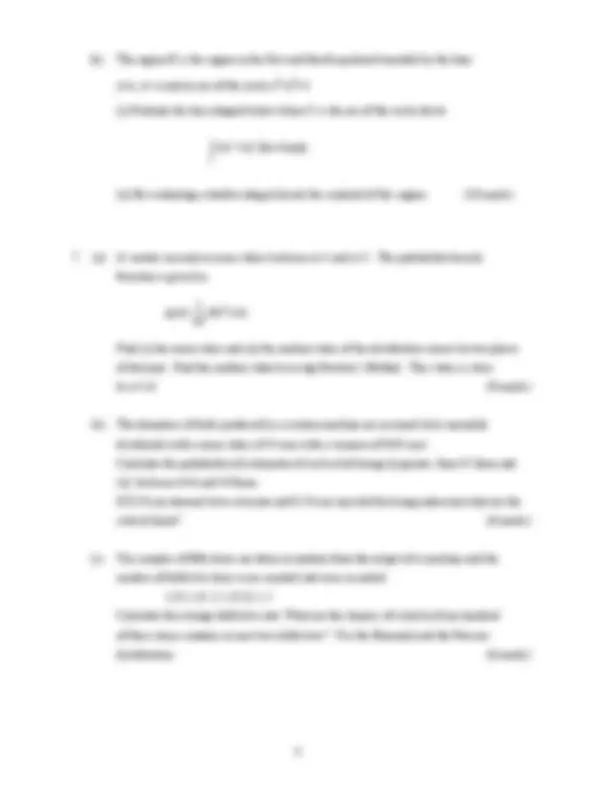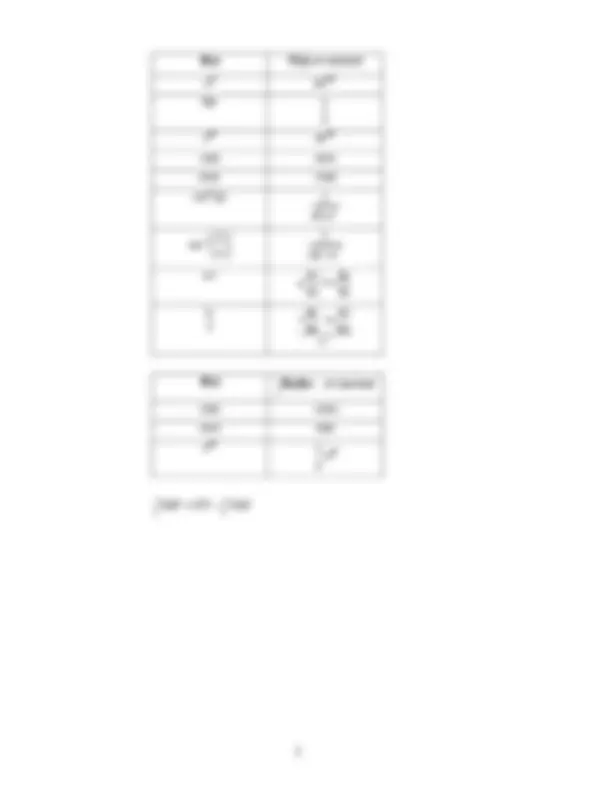





Study with the several resources on Docsity

Earn points by helping other students or get them with a premium plan


Prepare for your exams
Study with the several resources on Docsity

Earn points to download
Earn points by helping other students or get them with a premium plan
Community
Ask the community for help and clear up your study doubts
Discover the best universities in your country according to Docsity users
Free resources
Download our free guides on studying techniques, anxiety management strategies, and thesis advice from Docsity tutors
Main points of this past exam are: Quadrant Bounded, Laplace Transforms, Undetermined, Differential Equation, Numerical Method, Region, First Quadrant Bounded, Double Integral, Lagrangian Multiplier, Taylor Series Expansion
Typology: Exams
1 / 6

This page cannot be seen from the preview
Don't miss anything!




Answer FIVE questions. All questions carry equal marks.
Examiners: Mr. P. Clarke Prof. M. Gilchrist Mr. T O Leary
dxdy^ +3y=18x y(0)=^2 Solve this differential equation by using one of these methods. (ii) By using two numerical method with a step of 0.1 estimate the value of y at x=0.1. (9 marks)
(b) A plate of varying thickness lies in the region in the first quadrant bounded by the line y=2x and the parabola y=x 2. The mass per unit area at any point (x,y) on the plate is given by ρ=(12+0.6x)kgm-2^. By evaluating a double integral find the mass of the plate. (6 marks)
(c) An open rectangular box is to contain 4m^3 of liquid. By using a Lagrangian Multiplier find the dimensions of the box so that the surface area is at a minimum value. (5 marks)
(b) Find the partial derivatives of u and v with respect to x and y where
u sin 1 y 2x
v= 4x 2 − y^2. cont//…
(i) If T=f(u) is an arbitrary function in u show that
x T^ y T 0 x y
(ii) Estimate the value of v if the values of x and y were estimated to be 5 and 6 with maximum errors of 0.03 and 0.10, respectively. (8 marks)
(c) Find the maximum/minimum values of the function V=x 3 +y 2 -4xy+4x+3. (6 marks)
(i) (^) s +4s +3s 3 122 (ii) (^) (s-2)(s -4)^402 (10 marks)
(b) By using Laplace Transforms solve the differential equation 2 2
d y (^) +4 dy 20y 80 y(0)=y (0)= dt dt
(c) Find the zero and the poles of the transfer function L[f(t)]L[y] where
ddt y 2 4 dydt 9 y 10 0 tydt f(t) y(0) y(0) 0 2
cdxdt kx f(t) x(0) x(0)^0 dt m d x 2
2
(a) Solve this differential equation when m=1, c=6, k=8, f(t)=32. (6 marks)
(b) Find the general solution of this differential equation when m=1, c=4, k=4, f(t)=16t. (6 marks) (c) Find the general solution of this differential equation when m=1, c=0, k=4, f(t)=16sin2t. (8 marks)
(b) The region R is the region in the first and fourth quadrant bounded by the lines y=x, y=-x and an arc of the circle x 2 +y^2 =4. (i) Evaluate the line integral below where C is the arc of the circle above
2 2 C
(ii) By evaluating a double integral locate the centroid of this region. (10 marks)
p(x)= 10 1 (3x^2 +2x).
Find (i) the mean value and (ii) the median value of the distribution correct to two places of decimal. Find the median value by using Newton’s Method. This value is close to x=1.6. (8 marks)
(b) The diameters of bolts produced by a certain machine are assumed to be normally distributed with a mean value of 45 mm with a variance of 0.02 mm^2. Calculate the probability of a diameter of such a bolt being (i) greater than 45.3mm and (ii) .between 44.6 and 44.8mm. If 0.1% are deemed to be oversize and 0.1% are rejected for being undersize what are the critical limits? (6 marks)
(c) Ten samples of fifty items are taken at random from the output of a machine and the number of defective items were counted and were recorded 2, 0, 1, 0, 2, 1, 0, 0, 1, 1 Calculate the average defective rate. What are the chances of a batch of one hundred of these items contains at most two defectives? Use the Binomial and the Poisson distributions. (6 marks)
f(x) f ′ (x)^ a=constant x n^ nxn- lnx x
e ax^ ae ax sinx cosx cosx -sinx sin-1^ (x) 2
1-x
sin 1 x a
a -x uv dx vdu dx u dv+
v
u
v^2 dx
udv dx v du−
sinx -cosx cosx sinx e ax a
(^1) e ax